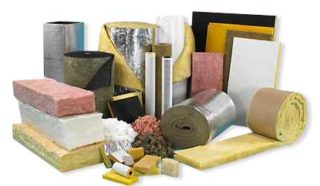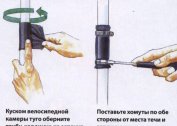When warming the working surfaces of buildings, common types of thermal insulators are traditionally used: mineral wool, polystyrene foam or polystyrene. Their properties are subject to special requirements regarding hygroscopicity and density.
The effect of insulation density on performance
Density affects such parameters of the material used for wall insulation:
- declared thermal insulation properties;
- soundproofing quality;
- resistance to deformation;
- installation features in certain working conditions.
For any heat insulator, the rule really is: the less it weighs (the less its density), the more convenient the material for installation, and therefore is more preferable. The stone wool density factor is estimated by experts with a big reservation. Its low thermal conductivity is due to the presence of an air gap between the threads. When this indicator reaches a certain minimum, the material ceases to retain heat.
When evaluating the material, it is always taken into account that the density of mineral wool affects not only its weight, but is also directly related to other performance characteristics.
Basic criteria and building codes

The resistance to heat transfer of the walls of buildings under construction is regulated by the current SNB 2.04.01 standards (chapter 5.1), which provides information for all types of walls and floors. In addition, for outdoor fences and coatings, parameters for air and steam permeability are necessarily calculated. In multilayer protective structures, the materials used are calculated as a whole, consistent with the main technical indicators.
The selection of products that are supposed to insulate the walls is preceded by thermal engineering calculations. According to their results, the type of the desired material and its specific brand are determined. When using synthetic substances (polystyrene or polyethylene), it is taken into account that they are impermeable not only to water, but also to steam. Therefore, when choosing them, it will be necessary to provide special measures to create good air exchange in the premises.
The materials molded in the form of plates (including glass wool) are subject to special requirements:
- the geometry is chosen so that the corners and faces of the workpieces do not have clearly distinguishable fractures and noticeable irregularities;
- the structure of the plates is dense, the presence of loosely bonded fibers and falling granules is considered completely unacceptable;
- surfaces on both sides are made rough, or one of them is made with a complex texture.
Fulfillment of the last requirement guarantees good adhesion with insulated walls.
Density of heaters of various classes
Densities of mineral wool for facades are differentiated according to the class of one or another insulation material, and also vary for various modifications of the same type. To assess the density of mineral wool (basalt or any other), it is taken into account that this insulation refers to almost nothing weighing materials. At the same time, its thermal conductivity coefficient on average does not exceed 0.026 W / meter cubic volume.
There are several types of basalt wool used for various purposes and differing only in the orientation of the fibers.Density indices for facade mineral wool for different samples are given in tables widely presented on the Internet. It can be seen from them that this indicator, depending on the modification and purpose of the product, varies in the range from 30 to 200 kilograms per unit volume. With such a wide dispersion of the densities of various heat insulators, the types that are used in floor slabs or when insulating roofs of buildings are of maximum importance.
As an example of estimating the density of mineral wool, basalt “Technonikol” is traditionally considered with a declared indicator of 195 units. This material is usually purchased for thermal insulation of joints of roof structures and cornice parapets. Rockwel basalt cotton wool has an indicator of 190 units of account. It is optimally suited for installation under roofing. Known brand of modern insulation “Knauf Insulation” has a relatively low density - not more than 35 kg per unit volume. They are intended exclusively for thermal insulation of frame structures and walls of buildings erected at high speed.
Special varieties of facing insulation with a low density of mineral wool for facades are produced by almost all large and well-known manufacturers of these materials. Some of them prefer to sell such a product as a separate category of products with a stated indicator of about 30-40 units. The company Knauf adapted to produce a product with a "floating" density, reaching a maximum value of 150 units.
Insulation density limit depending on the application
The density index for synthetic materials such as polystyrene ranges from 100 to 150 units. Such compacted plates are intended for insulation of roofs of buildings made of timber or for thermal insulation of floors between floors. Most manufacturers try to classify them according to their purpose, according to which the minimum permissible values are changed. The density of polystyrene foam, for example, depending on the technology used in its manufacture, averages from 28 to 35 kg. It is considered one of the lightest materials with a very low thermal conductivity.
The use of variable-density heat insulators for various declared purposes is well traced on specific samples of insulation materials. Products CARBON SAND “Technonikol” have a density of 28 kilograms per unit volume. They are traditionally used in the manufacture of sandwich panels, extremely reducing the weight of the workpieces and giving the coating the required thermal insulation characteristics. Another well-known heat insulator from “Technonikol” of the CARBON PROF brand is used in housing construction for insulation of walls and other loaded structures. This sample is designed for a density of 30-35 kilograms per cubic meter. For plate heaters used in the manufacture of road paintings, a characteristic of 50 and 60 kg per cubic meter is characteristic. In this case, the load on the coating increases, it needs thermal protection of increased strength.
Penoplex refers to common insulation materials, also having a density that depends on the intended purpose. Samples of insulation with an indicator of 25 units are designed to isolate typical vertical structures. Materials designed for use in road construction have an indicator reaching 47 units.
Penoizol and foamed polyethylene (VP)
This type of heat insulator differs from other materials in that the cooking procedure is directly tied to its place of use. Penoizol is applied to the protected surfaces in liquid form and has a very low density, not exceeding 10 kg per unit volume.The increased porosity of this material guarantees a high quality of insulation, and the liquid form of the fill provides excellent adhesion to any surface. At the same time, like most insulation samples with a low density index, penoizol needs an outer protective layer - at least in plaster finish.
The density index for VP varies in a wide range, is determined by its thickness and the use of reinforcing (reinforcing) materials. Standard products for floor insulation in rolls have a density of about 24 kilograms per unit volume. Thermal insulators designed for warming and serving as the basis for the protection of other structures, including refrigeration units, differ markedly from them. These objects need reinforcement by means of aluminum sheets, the required density reaches 50-60 kg / cubic meter.
Foam glass
Cellular or foamed glass insulates the facades, roof or foundation of any structure being erected. A mixture of glass and gas components in a baked form is represented by materials of various densities. For external insulation, samples with a density of 200-400 kilograms per cubic meter are used. These indicators are sufficient to achieve the required resistance to various factors, including strong wind gusts and random mechanical deformations.
Insulating foam glass blanks with a density of 200 units are traditionally used for brick facades, heaters with a density of 300-400 kg / cubic meter are used for insulation of roofs and foundation foundations. For thermal protection of lightweight frame structures, an option with an indicator of 100-200 units is suitable.
For thermal insulation of individual building structures and their elements, insulation materials are used, the choice of which is determined by their direct purpose. For wall and non-reinforced frame structures, light samples with a low density index will be required, eliminating excessive load on the protected structure. For this, materials are used, the declared indicator of which is 50-200 kilograms per cubic meter. To warm the interior of the house, for example, it is allowed to use materials of lower density, which fit into the boundaries from 28 to 50 units.
For the foundation and roof of any object, other methods of insulation will be required, for which substances with a high index are suitable. For this, products with the declared density characteristic from 150 to 400 units are suitable. At the same time, relatively light heaters with a low density (up to 250 kg / meter cubic) require a special protective layer. Otherwise, it is necessary to use products with more stringent requirements for the indicator in question.







